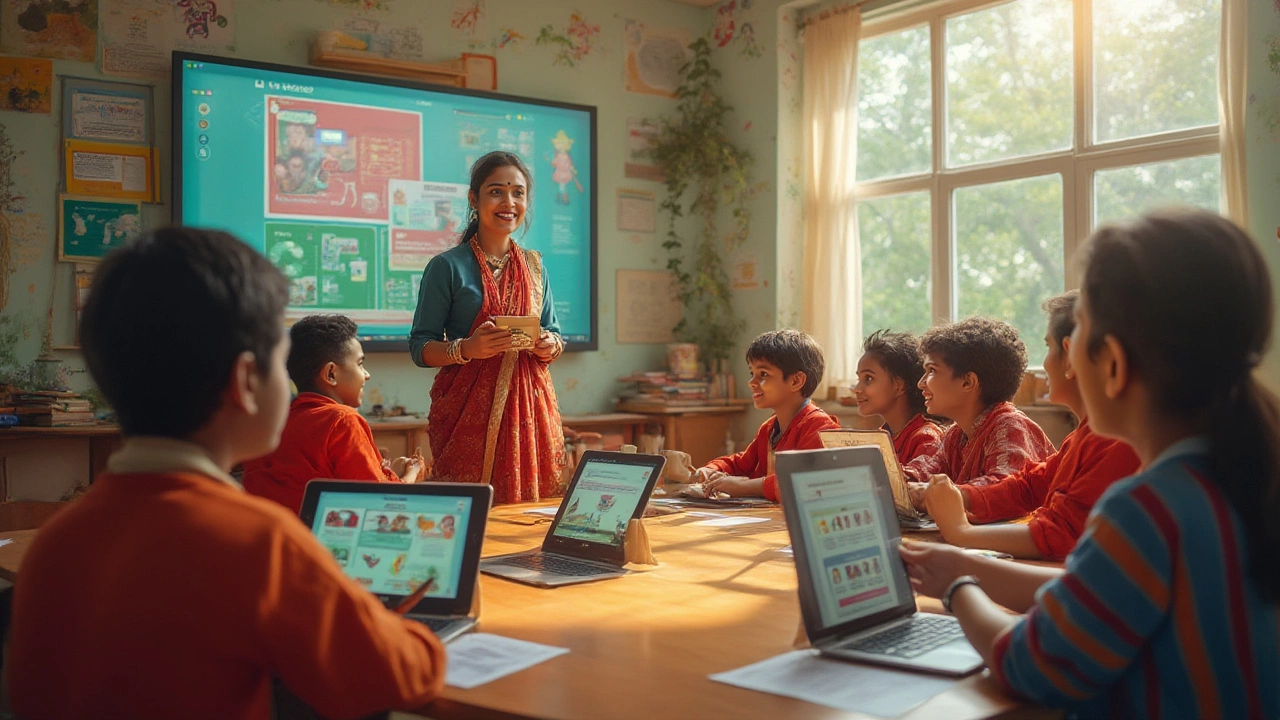Virtual Classroom: Your Hub for Modern Online Teaching
When working with Virtual Classroom, a digital environment that replicates face‑to‑face teaching through video, chat, and shared resources. Also known as online classroom, it lets teachers and students interact from anywhere while keeping the structure of a traditional class.
One of the core pillars of any virtual classroom is E‑Learning, the broader practice of delivering education via electronic devices and the internet. E‑learning fuels the virtual classroom by providing the content, assessments, and multimedia that keep lessons lively. Another critical piece is Student Engagement, the level of interest and participation learners show during online sessions. High engagement lifts retention rates and drives better outcomes, especially when teachers use interactive polls, breakout rooms, and real‑time feedback. Finally, a solid Learning Management System, software that organizes courses, tracks progress, and hosts resources is the backbone that synchronizes schedules, grades, and communication.
Key Elements of an Effective Virtual Classroom
First, reliable connectivity is non‑negotiable – without stable internet, live streams falter and engagement drops. Second, the LMS must support content diversity: video lectures, coding sandboxes, quizzes, and discussion boards. Third, instructors should blend synchronous (live) and asynchronous (recorded) formats to cater to different learning styles. Fourth, gamified elements such as leaderboards or badges boost student engagement, turning passive watching into active participation. Lastly, analytics built into the LMS give teachers instant insight into who’s lagging, allowing quick interventions.
These components tie directly to many of the articles you’ll find below. For example, the post on “The Biggest Problem with E‑Learning: Lack of Student Engagement” digs into why learners tune out and offers concrete tactics to re‑ignite interest. The guide on “5 Types of Code Every Coding Class Should Teach” shows how a virtual classroom can host hands‑on programming labs, leveraging LMS coding environments. Meanwhile, “High‑Pay Jobs You Can Land After 3 Months of Learning” demonstrates how short, intensive online courses can be packaged inside a virtual classroom to accelerate career switches.
Understanding the relationship between virtual classrooms and coding education is crucial. A virtual classroom enables real‑time code reviews, collaborative debugging, and instant feedback – all activities that traditional classrooms struggle to replicate. This synergy is why many EdTech platforms are focusing on integrated coding sandboxes within their LMS, turning abstract concepts into live practice.
Another trend highlighted in the collection is the rise of hybrid models, where students attend both in‑person labs and virtual lectures. Virtual classrooms provide the flexibility to schedule guest speakers from across the globe, enriching curricula without the travel costs. When paired with robust student engagement strategies, such as live quizzes and peer‑review assignments, learners get the best of both worlds.
Finally, the posts on “Best Easy Careers That Pay Big in 2025” and “Most In‑Demand College Degrees for 2025” illustrate how virtual classrooms can streamline degree pathways. By mapping course prerequisites inside the LMS, students can track progress toward high‑demand degrees, ensuring they meet industry standards without wasted time.
All this shows that a virtual classroom is more than a video call – it’s an ecosystem that blends e‑learning, engagement tools, LMS functionality, and real‑world skill building. Below you’ll discover a curated set of articles that dive deeper into each piece of this ecosystem, offering actionable advice you can start using today.
eLearning Explained: Popular Names, Trends, and What You Should Know
Find out what eLearning is really called, how the names differ, and the latest trends and facts you never knew about digital education.
Best Free Apps for Online Teaching: Which One Really Works?
Not sure which free app is best for online teaching? This article breaks down top-rated platforms, comparing their features, reliability, and quirks, all with an honest look at what real teachers need. Expect hands-on insights about ease of use, student interaction, and hidden limits. Whether you're teaching kids, teens, or adults, you'll find practical advice here. Cut down your search time and start teaching smarter, not harder.
eLearning Example: How Online Platforms Like Coursera Work
This article unpacks what a typical eLearning example looks like, focusing on popular platforms like Coursera. You'll see how eLearning blends video lessons, quizzes, and community tools for practical, real-world learning. The article breaks down features used by millions, shares tips for making the most of digital courses, and offers relatable stories. Curious about how eLearning fits into daily life? All the essentials are here.


